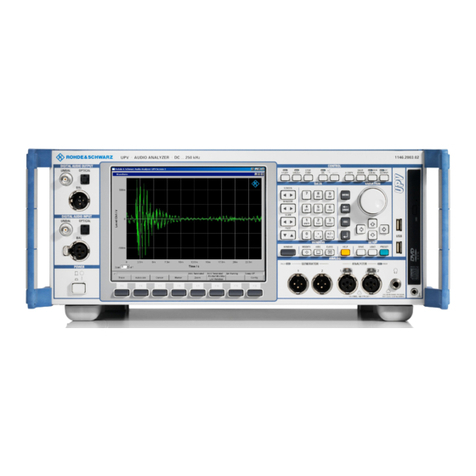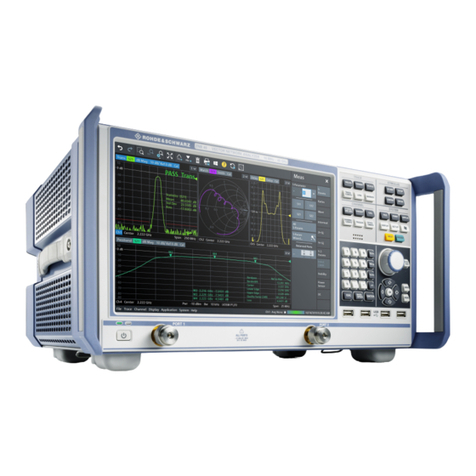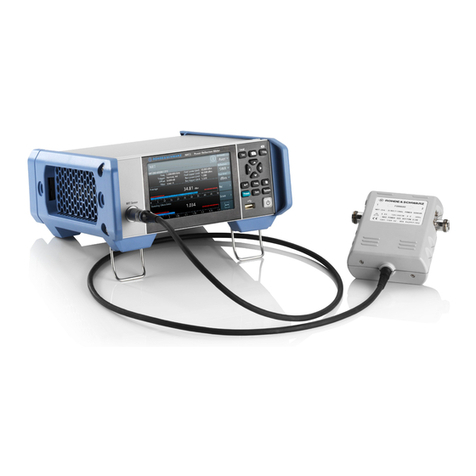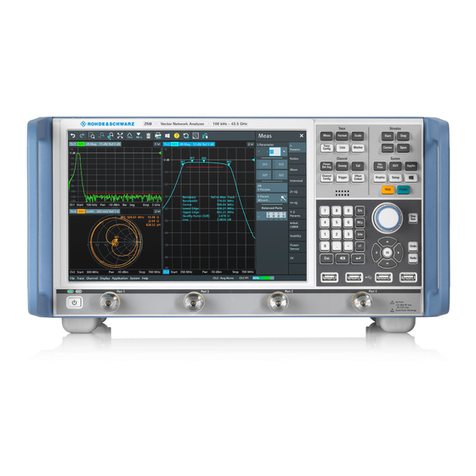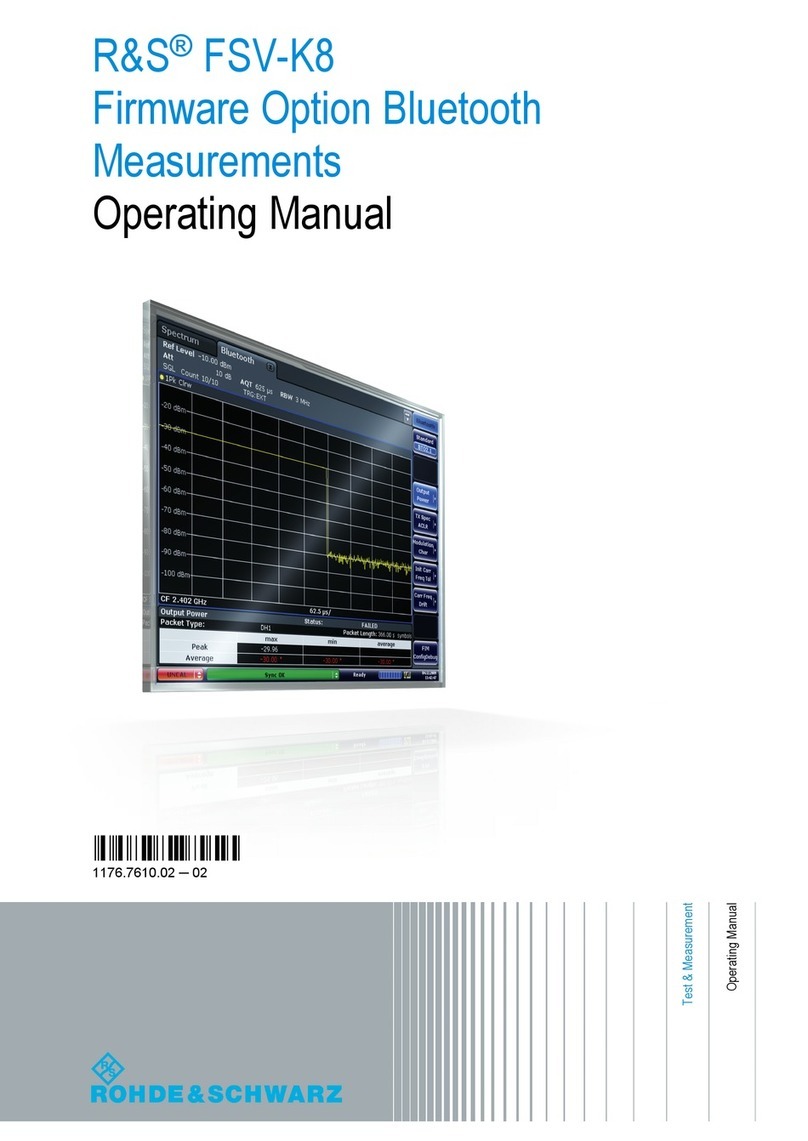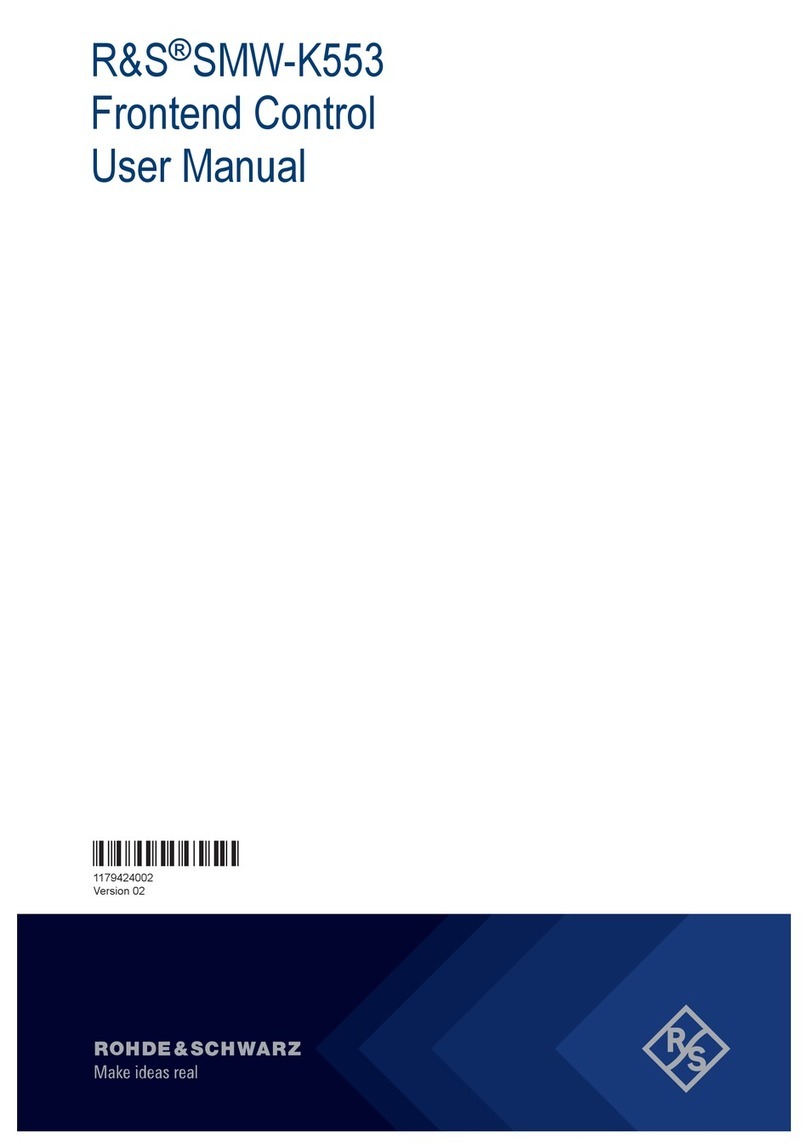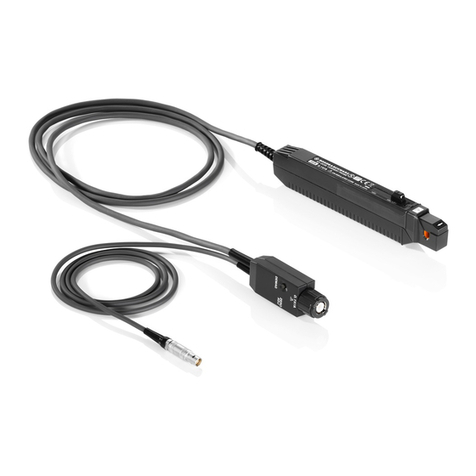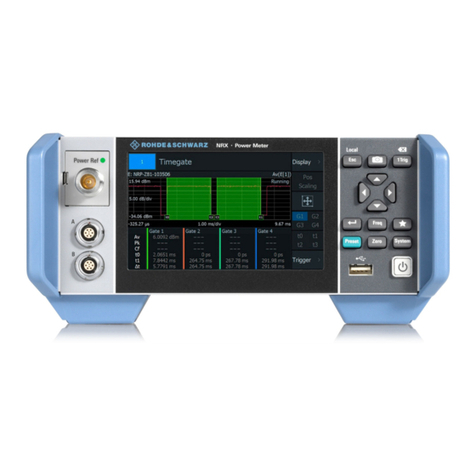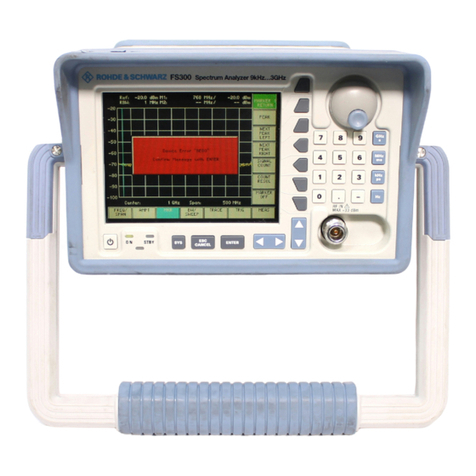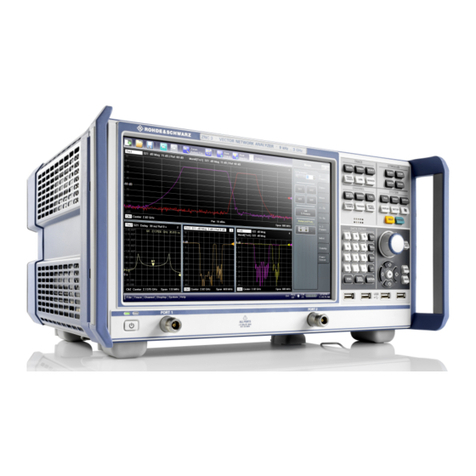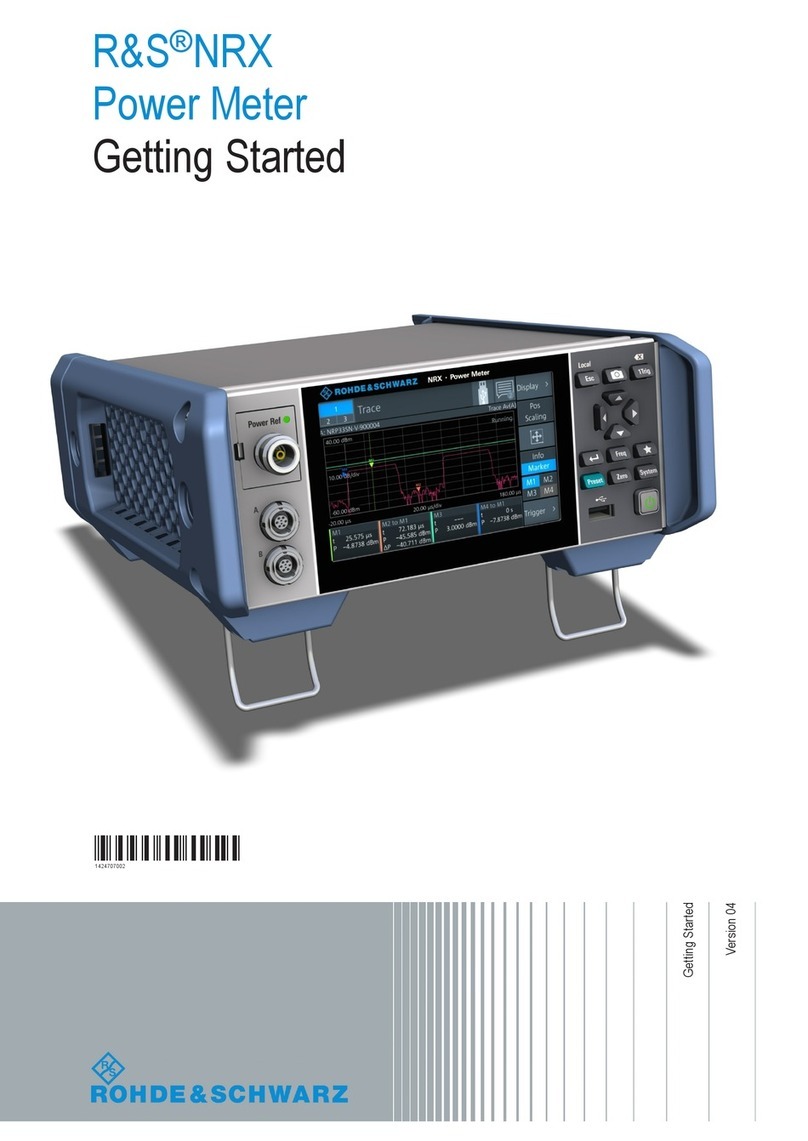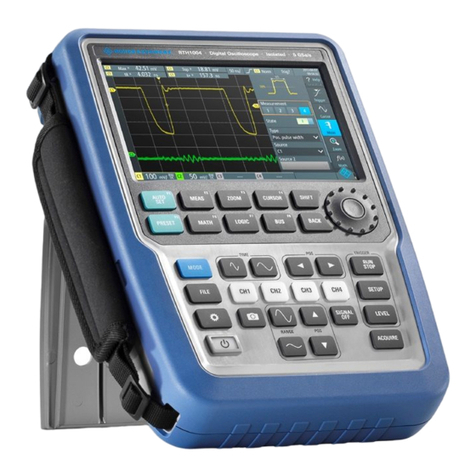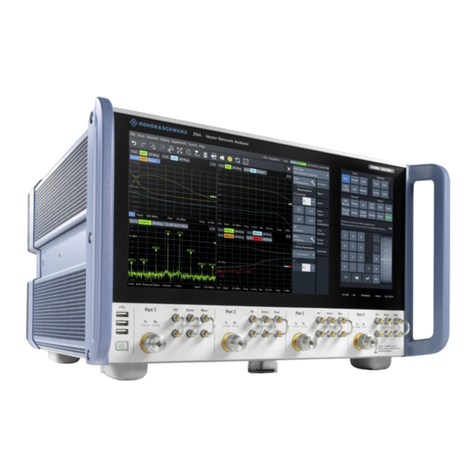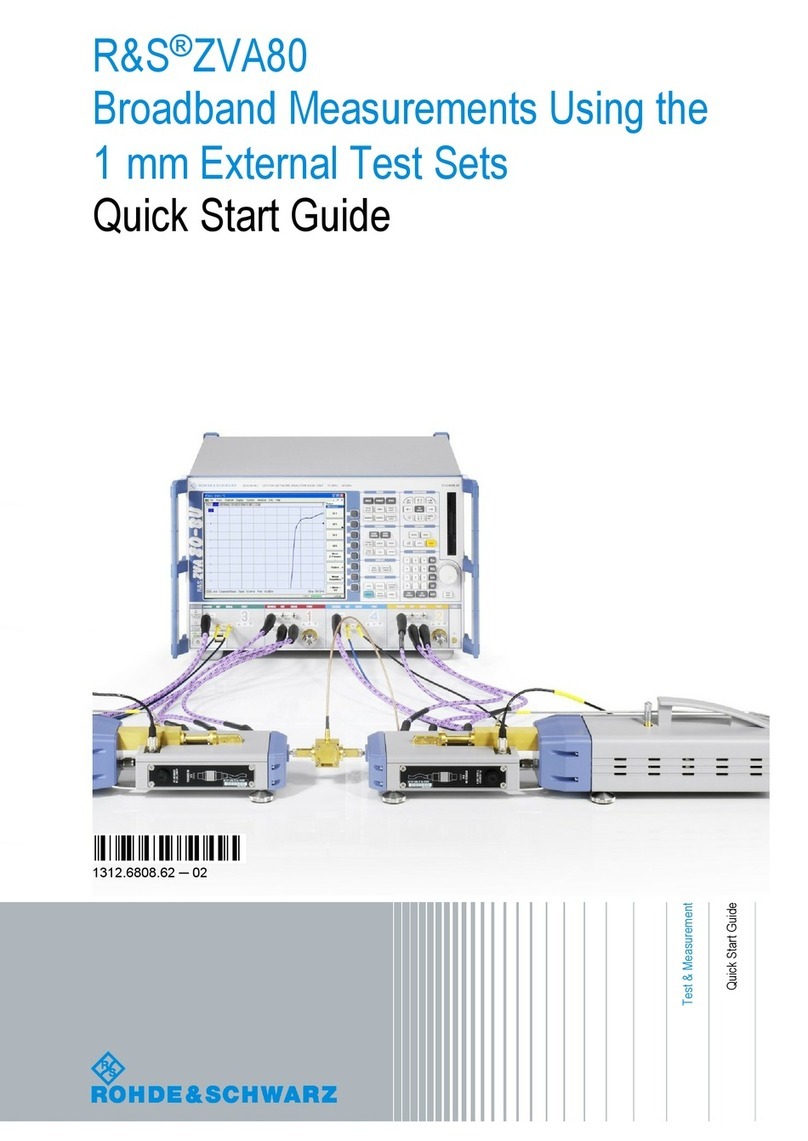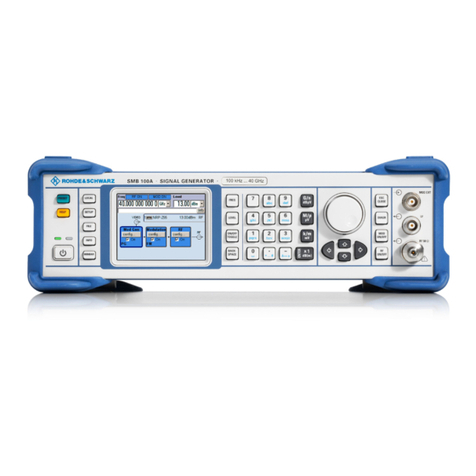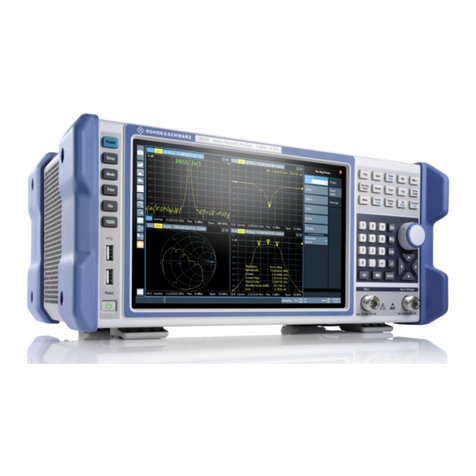
Contents
R&S®FSV/A3000 I/Q Analyzer
3User Manual 1178.8536.02 ─ 01
Contents
1 Preface.................................................................................................... 5
1.1 Documentation Overview............................................................................................. 5
1.2 About this Manual......................................................................................................... 7
1.3 Conventions Used in the Documentation...................................................................8
2 Welcome to the I/Q Analyzer Application............................................ 9
2.1 Starting the I/Q Analyzer Application..........................................................................9
2.2 Understanding the Display Information....................................................................10
3 Measurement and Result Displays.....................................................13
4 Basics on I/Q Data Acquisition and Processing............................... 17
4.1 Processing Analog I/Q Data from RF Input.............................................................. 17
4.2 Using Probes............................................................................................................... 21
4.3 Basics on External Generator Control...................................................................... 24
4.4 Basics on Input from I/Q Data Files...........................................................................35
4.5 IF and Video Signal Output........................................................................................ 36
4.6 Receiving and Providing Trigger Signals................................................................. 36
4.7 I/Q Data Import and Export.........................................................................................37
4.8 Basics on FFT..............................................................................................................38
5 Configuration........................................................................................45
5.1 Configuration Overview..............................................................................................45
5.2 Import/Export Functions............................................................................................ 47
5.3 Data Input and Output Settings................................................................................. 50
5.4 Amplitude.....................................................................................................................65
5.5 Frequency Settings.....................................................................................................70
5.6 Trigger Settings...........................................................................................................71
5.7 Data Acquisition and Bandwidth Settings................................................................77
5.8 Display Configuration.................................................................................................85
5.9 Adjusting Settings Automatically..............................................................................85
6 Analysis................................................................................................ 89
6.1 Trace Settings..............................................................................................................89
6.2 Spectrogram Settings.................................................................................................93













